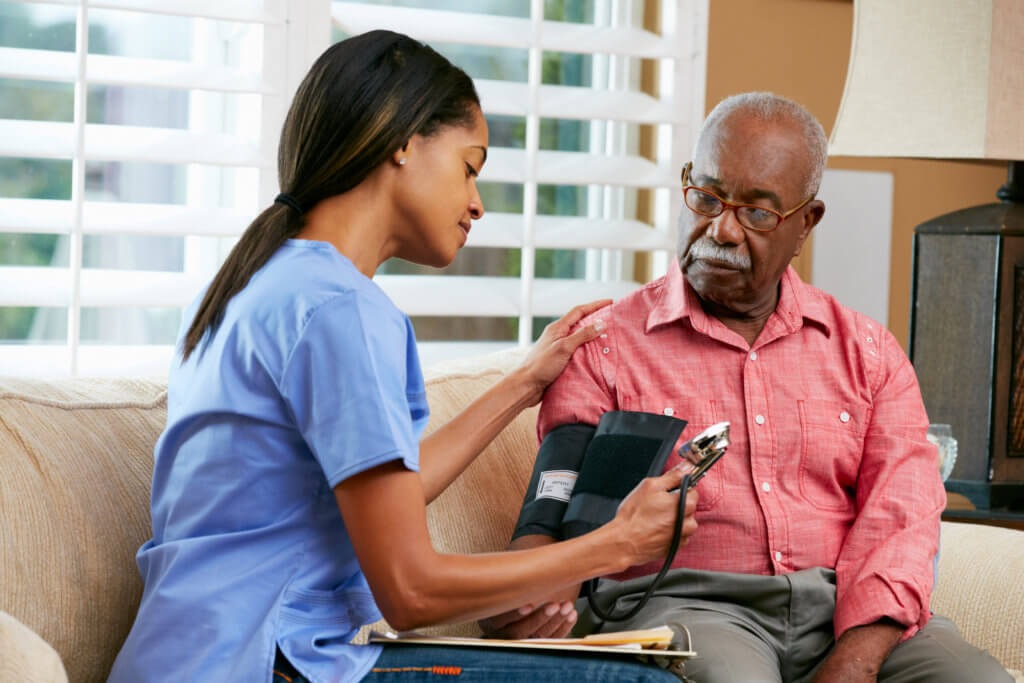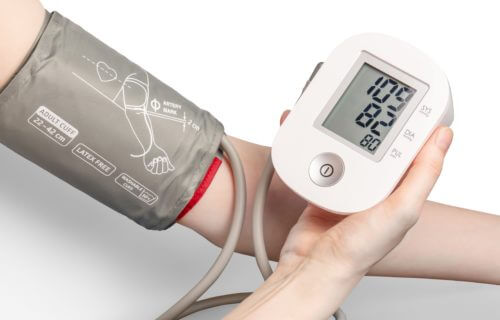BOSTON — If you’re someone with high blood pressure, you’re going to want to sit up for this news. Researchers working with the American Heart Association have released the results of a nearly 30-year study on high blood pressure, finding that doctors may miss certain health complications if they don’t have their patients lying down.
Typically, patients are only measured while sitting upright. Now, it should become common practice to do two readings, doctors argue.
“If blood pressure is only measured while people are seated upright, cardiovascular disease risk may be missed if not measured also while they are lying supine on their backs,” says lead study author Duc M. Giao, a researcher and a 4th-year MD student at Harvard Medical School, in a media release.
People who also had their blood pressure taken while lying down revealed elevated risks for heart attack, stroke, heart failure, and premature death. The type of medications people use to manage blood pressure did not impact cardiovascular risks, according to the findings.
The autonomic nervous system regulates blood pressure. However, the pull of gravity may prompt blood to pool while seated or in an upright position. Meanwhile, the body is sometimes unable to regulate blood pressure while lying down, being seated, and standing.
“Our findings suggest people with known risk factors for heart disease and stroke may benefit from having their blood pressure checked while lying flat on their backs,” Giao adds.
The first phase of the study began in 1987 and continued until 1989. A total of 15,972 adults living in the U.S. had their blood pressure taken while lying down or sitting up. One of the key features of the study was the diversity of the participants. Over half (56%) were women, and 25 percent of the participants were Black. Blood pressure data was gathered in both rural and urban clinics. Their health was then followed for an average of 25 to 28 years, with the latest health data collected between 2011 and 2013.

(© M. Business – stock.adobe.com)
Sixteen percent did not have high blood pressure — a reading greater than 130/80 mm Hg — while seated. However, these same people did show high blood pressure when researchers measured their BP while lying flat on their backs.
Three in four people (74%) who did have high blood pressure while both seated and lying down showed a 1.6 times higher risk for future heart failure, a 1.86 times higher risk for stroke, a 1.43 times higher risk for premature death, and a 2.18 times higher risk for coronary heart disease. Those individuals who had high blood pressure only when lying down also showed similar risks.
“Our findings suggest people with known risk factors for heart disease and stroke may benefit from having their blood pressure checked while lying flat on their backs,” Giao explains. “Efforts to manage blood pressure during daily life may help lower blood pressure while sleeping. Future research should compare supine blood pressure measurements in the clinic with overnight measurements.”
One limitation of the study is that it focused only on middle-aged adults. The average age for participants when having their blood pressure taken was 54. It is possible the findings may look different for older populations.
The team presented their findings at the American Heart Association’s Hypertension Scientific Sessions 2023.
You might also be interested in:
- COVID may cause severe high blood pressure, new research warns
- People with different blood pressure readings in each arm at higher risk for heart attack, stroke
- Core exercises like planks, wall sits best for lowering blood pressure


Most Nigerian doctors are trained to measure BP while patients are sitting and also lying supine.
The article buried the lead: The type of medications people use to manage blood pressure did not impact cardiovascular risks, according to the findings.
I wish our doctor will get to read this.
I apologise to the medical fraternity all over the world but such articles which appear quite often ,do their best to confuse and confound the people.
Is it BP showing accurate measure,
Bp apparatus showing correct measurements?
This study sensitizes the ealy risk detection,investigation and management.
Thanks for sharing 🙏
Fear main aim to create business medical freternity practicing these methods at ease. Fear is the main dissease 🤔
Always. That’s the fear campaign that gets patients to agree to absurd and dangerous procedures. Over 250,000 people die every year because of Doctor error…that’s why it’s called a “Practice”
Blood pressure taken using home electronic machines usually are 5% lower than actual, especially the diastolic reading.
I doubt they may revert back to the today style after 40 years from today, in 2063, change is law of nature.
IS THIS QUOTE A TYPO IN YOUR ARTICLE?
“The type of medications people use to manage blood pressure did not impact cardiovascular risks, according to the findings” .
“The type of medications people use to manage blood pressure did not impact cardiovascular risks, according to the findings.”
Is this quote from your AHA article a typo?
The fact that you quoted a study begun in the 80”s, and was stated by a 4th year medical student, without any data on the number of patients, or other real methodology doesn’t lend mùch credibility or reliability to the report.
Ànd like such studies over the years, the public was told of medical results for years on the subject, to be contradicted now, without explanation. Doesn’t look like all the facts
are clear, included or resolved.
Great point. And why 10 years between the end of the second study and releasing it now?
BP changes all the time and well known doctors office syndrome is real, a higher BP at office. I take my BP each day and it is always, always lower than Dr office. Plus years ago Mayo said the arm should be parallel to heart, not drooping down while on the chair. Add in the inaccuracies with devices and this creates a big business for BP meds. I’ve made Dr office re-take BP (5 mins later) and total different number.
Please don’t get me wrong, there are real BP problems out there but IMHO to much emphasis is put on BP at Dr office.
Yah, mainly nurses and assistants take BP and the Drs get their VS from us, FYI
A ten year old study is suddenly news?
Most are too stupid to read blood pressure now as it is. I was in the hospital recently and the nurse who bragged about how long she’d went to college came in and the line on the cuff that’s supposed to be aligned with your artery she had completely on the other side of my arm and then got mad and said she knew what she was doing when I went to switch it over to where it was supposed to be. she then switched it back to where it wasn’t supposed to be and then was dumbfounded when she couldn’t get a blood pressure reading correctly. Dr’s and nurses in the US are idiots.
I’m a senior and measure my BP frequently. I haven’t found any noticeable difference from lying down vs sitting up.
Why were they sitting on this completed study so long if its findings could save lives? Deranged medical/science ethics.
Heart disease is the #1 killer.